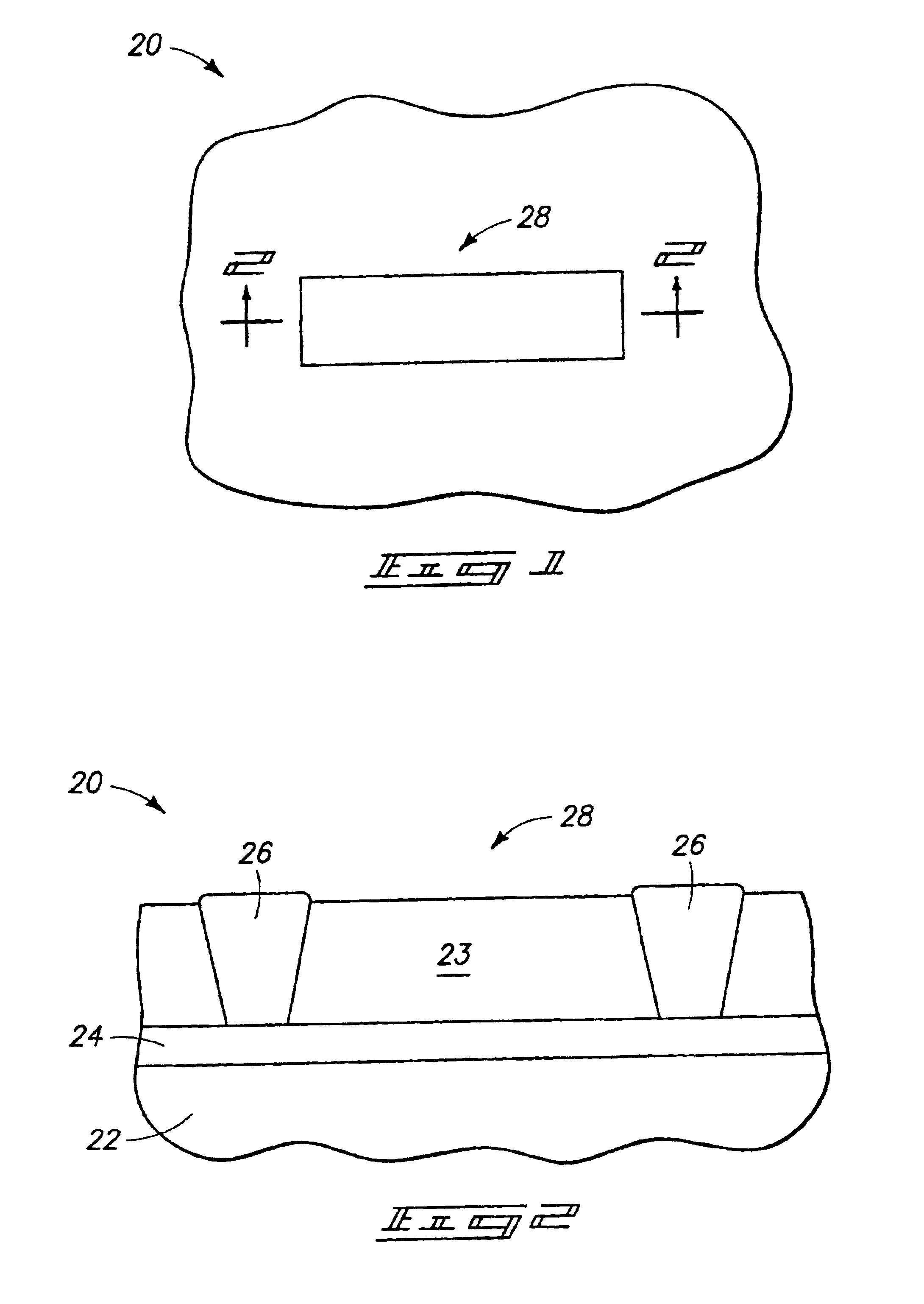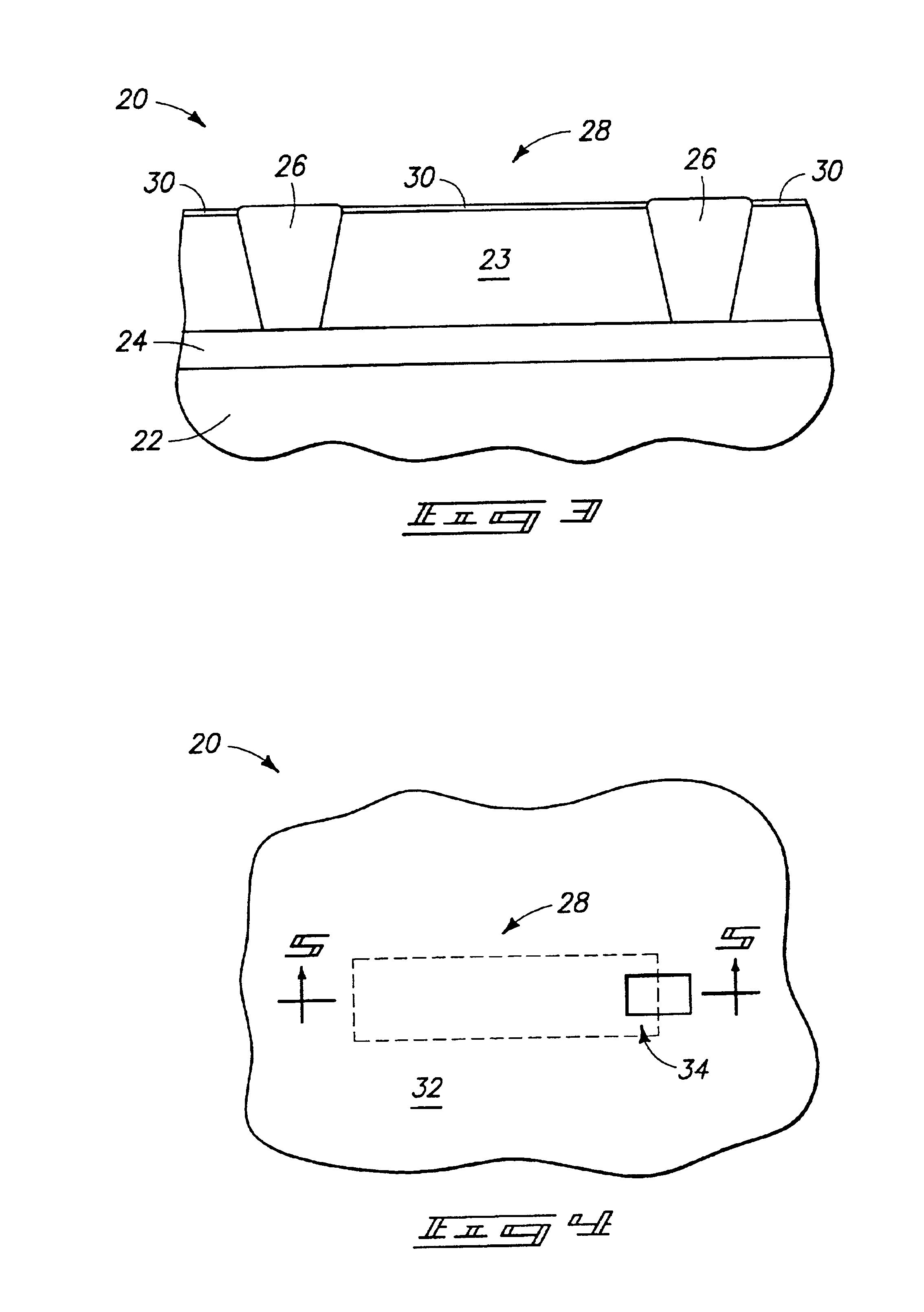Methods of forming field effect transistors and field effect transistor circuitry
a field effect transistor and field effect technology, applied in logic circuits using specific components, pulse generators, pulse techniques, etc., can solve problems such as increased sub-threshold current leakage and adversely affecting device performan
- Summary
- Abstract
- Description
- Claims
- Application Information
AI Technical Summary
Benefits of technology
Problems solved by technology
Method used
Image
Examples
Embodiment Construction
[0024]This disclosure of the invention is submitted in furtherance of the constitutional purposes of the U.S. Patent Laws “to promote the progress of science and useful arts” (Article 1, Section 8).
[0025]Referring to FIGS. 1 and 2, a semiconductor wafer fragment 20 includes a semiconductive substrate 22 having a substrate region 23. Region 23 comprises a body of a field effect transistor which is to be formed. In the illustrated example, substrate 22 includes a buried mega eV (MeV) layer 24 and a pair of isolation regions 26 which collectively isolate the body. Where n-channel devices are to be formed, substrate region 23 comprises p-type material and layer 24 comprises n-type material. Where p-channel devices are to be formed, substrate region 23 comprises n-type material and layer 24 comprises p, type material. Layer 24 and isolation regions 26 define an area 28 over or within which field effect transistor circuitry is to be formed. The substrate can comprise any suitable substrat...
PUM
 Login to View More
Login to View More Abstract
Description
Claims
Application Information
 Login to View More
Login to View More - R&D
- Intellectual Property
- Life Sciences
- Materials
- Tech Scout
- Unparalleled Data Quality
- Higher Quality Content
- 60% Fewer Hallucinations
Browse by: Latest US Patents, China's latest patents, Technical Efficacy Thesaurus, Application Domain, Technology Topic, Popular Technical Reports.
© 2025 PatSnap. All rights reserved.Legal|Privacy policy|Modern Slavery Act Transparency Statement|Sitemap|About US| Contact US: help@patsnap.com



